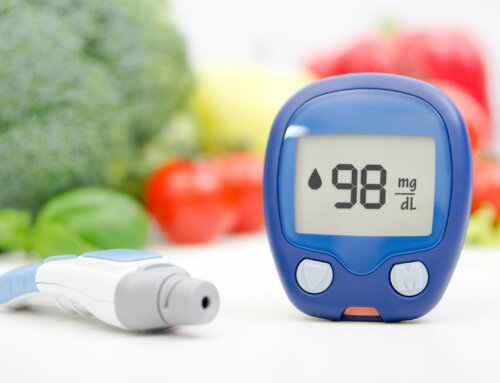There are all kinds of accurate and interesting information which will improve your health and life if you currently have diabetes. Read on to find out what is being done and continues to be worked on to make living with diabetes easier and more controllable.
1. What is a polypill?
Many patients who have type 2 diabetes are required to take several pills a day to control their diabetes as well as blood pressure and cholesterol levels. Enter the polypill. More and more polypills are being created to make “pill taking easier and more efficient.”
A polypill contains multiple medications, either the same kind of medications or one that contains multiple kinds of medication to treat certain medical problems, common with diabetes. For instance, a polypill that contains multiple blood pressure lowering drugs may address the high blood pressure as well as making the patient more compliant.
Less pills per day equals “better memory and ability to take them”. There are even some triple and quadruple polypills coming on the market. Resistant hypertension, which is becoming more prevalent, leads to a higher cardiovascular risk, already seen with diabetes. It is also very difficult to treat.
It does not easily respond to blood pressure medication and often “demands a patient to take several separate blood pressure pills daily.” Sometimes this is not a safe practice, or very practical, and the patient decides not to take them. The blood pressure remains uncontrolled leading to several more heart related complications.
Hypertension remains a global problem with over 1 billion adults having high blood pressure worldwide. Hypertension is one of the leading causes of cardiovascular disease because it is often “treated sub optimally” even in countries where drug access such as USA and the UK are available and affordable.
Former CDC director Tom Frieden wrote in Feb 2024, “Hypertension is the world’s silent and leading killer. We should make it the focus of our next breakthrough.” Hypertension kills more than 10 million people a year worldwide. In July 2024, the World Health Organization (WHO) endorsed taking these polypills which are not yet available in the US.
We have low-cost blood pressure monitors and lots of blood pressure screenings, yet so many patients remain uncontrolled with hypertension.
At this point in time, more studies must be done since “leading physicians and key federal decision makers still think taking a polypill is too radical.” Over 20 years ago, 2 preventive medicine experts, Dr. Wald and Dr. Law, from the UK proposed that everyone over age 50-55 take a polypill composed of 3 inexpensive low-dose generic blood pressure medications, a generic statin drug {to lower cholesterol), folic acid and possibly a low dose aspirin.
In 2021, 3 large international studies looked at over 18,000 people and found that “taking a polypill decreased heart attacks, strokes and cardiovascular deaths by 38%. When low dose aspirin was added it decreased by almost 50%”. At this point in time, the US spends 4.5 trillion annually on heath care and adult life expectancy in the US is lagging 56 other countries.
Polypills have also been studied and suggested for treating diabetes. Included would be “a generic statin, an ACE inhibitor for blood pressure control and to protect the kidneys, a low dose aspirin and metformin (a diabetes drug which works to lower sugar production in the liver).”
When studied “polypills had low rates of side effects.” There are some polypills that are already FDA approved and made in specialized compounding pharmacies. Talk to your health care provider to see if a polypill is right for you.
2. What are some natural causes of death? Which is the most common cause of natural death?
“Natural causes” is a term used to describe how a person dies. Natural causes include old age where organs just stop working. Most people die of natural causes. Unnatural causes include accidents, suicides and homicides which make up less than 10% of total deaths.
The leading natural cause of death is coronary artery disease or CAD. Nearly 16% of the world’s total deaths are caused by CAD. The leading natural cause of death with diabetes is also CAD. The second most common cause of natural death is stroke and chronic obstructive lung disease (COPD).
Diabetes and its complications are the 8th leading cause of death in the United States. With today’s modern medicine, and people living way into old age, the same natural causes of death remain.
3. What is non-aerobic fitness?
Let’s start with aerobic fitness. Aerobic fitness is physical activity that uses your body’s large muscle groups, increases your heart rate and how much oxygen your body uses. Aerobic exercise includes walking, running, cycling and swimming. These activities strengthen your heart, lungs and your blood vessels.
Non-aerobic fitness includes muscle strength and power, flexibility and balance. These skills are extremely important the older we get. Falling and breaking a hip or femur bone in your thigh can be a life altering experience. “Over 3 million older adults are treated in emergency rooms yearly for fall injuries.”
A fall can lead to a long-term disability. Fear of falling can make you afraid to walk, shop, work or take part in social activities. For people over 50, “not being able to stand on one foot for at least 10 seconds was associated with a higher risk of death from all causes in their next decade.” This was recently published in the British Journal of Sports Medicine.
One legged posture is needed for climbing steps, walking, standing up from a chair and getting into and out of a car. Loss of balance translates to less exercise and the snowball effect of not being able to move or live independently. Balance should remain steady until your mid-late 60s and may then diminish quickly.
Certain medications or medical problems can make balance worse. Being on 5 or more prescription medications at once will increase your fall risk. Inner ear issues, ear infections, sinus problems or drinking alcohol can cause reduced balance.
Diabetes, heart disease, stroke, vision problems, dementia or cognitive decline, thyroid problems, even nerve and blood vessel damage can cause balance issues. Balance problems may result in certain symptoms such as nausea, vomiting, changes in heart rate and blood pressure, anxiety, fear, a panic sensation, feelings of floating, confusion and feeling like you will tumble.
How do you know if you have a challenge with your balance?
Although more testing is needed, the 10 second balance test on one foot is a good indicator of your balance. Stand on one foot, barefoot, with the top of the raised foot placed on the back of the standing leg’s calf. This simple balance test is an indicator of “mortality in the near future.”
The 10-second balance test gives your health care provider and you feedback. This test is quick, easy, costs nothing and safe. According to The World Health Organization (WHO) “bad or poor balance makes it much more likely you will fall.” About 680,000 people die each year from falls, globally.
Balance can improve substantially with specific and continuous training. Train by standing on one foot daily for a few minutes and add time as you can. Try it barefoot and then in sneakers. Do it while you brush your teeth for 10-15 seconds per leg. Later in the day, stand near a table and stand on one leg for 3 sets of 10 seconds. Also stand with feet together for 10 seconds without holding on to anything. Make sure you stand close to something sturdy so you can grab onto it if you become unsteady.
Use the “sit to stand exercise” to build strength, body mechanics, stamina and balance. Try not to use your hands at all to lift yourself from the chair. Repeat 10 times, twice a day. If you can’t achieve progress with these simple exercises, plan to register for physical therapy (PT) with a written prescription from your doctor.
PT can help you gain strength in your arms, legs and core, along with improving your overall balance. Having reasonable balance reduces your fear, increases your walking speed and improves physical function. It even helps your mind. Studies have shown “balance training improved memory and spatial cognition.”
What else can you do to help with your balance and reduce your risk of falling?
- Do not walk in the dark. Keep a night-light on or carry a small flashlight. Put lights in your closet.
- Never stand up too quickly from a lying or sitting position. Orthostatic hypotension can occur due to a quick change in movement and position.
- Use an assistance device such as a walking stick, a ski pole, a cane or a walker for improved balance.
- Stay hydrated. Dehydration can cause dizziness.
- Have your eyes and hearing tested.
- Stay active to keep muscles and bones strong.
- Talk to your health care provider about taking a Calcium and Vitamin D supplement.
- Ask your physician if you need a prescription for bone strengthening medication. Do you have osteoporosis?
- Have your physician test your reflexes.
- Don’t wear high heels, pointy shoes or backless shoes. Try to wear shoes that fit properly, have laces and rubber soles.
- Don’t walk in just regular socks. Wear socks with a gripping surface on the bottom if you like to walk around in just socks.
- Remove area rugs and other fall hazards.
- Use bathroom mats and rugs with a non-skid surface.
- Install grab bars in the bathtub, shower and commode.
- Cover all cords which are a tripping hazard.
- Clean up spills quickly. Never walk on a wet floor.
- Use a standing stool or ladder with side railings.
- Check chair and sofa heights to see if they are at a comfortable height. Low seating can be dangerous.
- Carry a fanny pack instead of a purse. Use a purse with a shoulder strap so your hands remain free.
- Be extra careful in bad and wet weather. Wear proper shoes.
- Get enough sleep.
- Try yoga, Pilates or Tai-Chi for improved balance.
4. Will there be a vaccine for type 1 diabetes soon?
“There is a vaccine in development which could potentially slow or halt the progression of type 1 diabetes.” Type 1 diabetes is very different from type 2 diabetes. Type 1 diabetes is considered “an autoimmune disease that destroys the beta cells of the pancreas where insulin is made.” Usually by type 1 diagnosis, 80% or more of the beta cells have been destroyed and you become completely dependent on insulin injections.
A vaccine presently being studied is Diamyd TP (made by a Swiss biotechnology company called Diamyd Medical) which holds a “promise as a potential immunotherapy for type 1 diabetes.” The thought is to “reprogram the immune system from a pro-inflammatory reaction to an anti-inflammatory reaction.”
There have been several obstacles standing in the way of a type 1 vaccine in the past 20 years. The vaccine is not being injected under the skin like insulin. It is being injected directly into the lymph nodes. This has created a stronger immune response. Diamyd is in a new phase 3 trial called “DIANODE-3.”
The trial has recruited over 300 participants from the US, Eastern Europe, Spain and Sweden. This trial plans to end in 2025. The “Diamyd vaccine” may eventually become a treatment option that combats the immune response that leads to type 1 diabetes. Currently, the closet thing to a cure for type 1 diabetes is “a pancreas transplant or beta cell transplantation from deceased donors.”
5. What are Smart Pills?
Smart pills are small devices that are swallowed like a capsule. Some “smart pills” are real medicines and others are actual diagnostic devices. Sensors and microchips are put inside the smart pills to capture information. They are now making a GPS for smart pills, so they know the “exact location in the body to travel to.”
Typically, they are swallowed, pass through the digestive tract, collect data and record images. They can find and diagnose GI problems, take your temperature, and monitor slowdowns in your GI tract which is a common problem in diabetes called gastroparesis. They are not quite mainstream yet, but experts say they will be here very soon.
6. What are Smart beds?
Smart beds are electronic medical beds which use technology to increase your comfort. The beds can let someone know if you “get up, fall out of bed or show agitation.” They are becoming very useful in hospitals and nursing home facilities. Smart beds can also predict pressure points and keep you from getting bed sores from skin breakdown if you are in bed for a long time.
Skin irritations and skin breakdown is very common in patients with diabetes. Some smart beds even have features to keep track of your vital signs such as heart rate, blood pressure, breathing rate and temperature, when the staff is too busy or unavailable.
7. What is robotic surgery?
Robots can help “surgeons have more accuracy and control.” Surgery is less invasive, and surgeons can make tiny incisions. The robot is controlled by the surgeon through a computer at a control center near the operating table. It helps by causing fewer complications, reduced blood loss, less pain, shorter operation times, shorter days in the hospital, smaller scars and a faster recovery.
Common robotic surgeries are gall bladder removals, hernia repairs and hip replacements. There are even more complex procedures like “heart surgery with more precision, flexibility and control.” Robotic surgery is not performed at every medical center or by every surgeon. Find out if this procedure is right for you.
8. What are Electronic Health Records (EHRs)
Gone are the days of paper charts that stay in your physician’s office for 5 years or paper charts at the nurse’s station in the hospital. Poor handwriting by staff members is also no longer a big problem.
Your health records are now kept “electronically” so your entire medical team inside and outside a particular office, hospital or other facility have instant access. This helps coordinate care, share information and receive critical information much more quickly. The updates are available fast so medical decisions can be made sooner, and many medical mistakes can be avoided. “It may even lead to more accurate diagnoses and treatments.”
9. What is a CT calcium score test? Do I need one if I have diabetes?
A CT calcium score is a “non-invasive, quick and convenient test to help your physician decide if you need treatment for prevention of a heart attack or stroke.” The results are read by a radiologist. Since heart disease is the leading cause of death with diabetes, it may be important to discuss this test with your physician.
It is a 10-minute CT scan which looks at how much calcium build-up is in your coronary arteries without having to enter your body. The level of calcium equates to plaque build-up. Plaque builds up in your coronary arteries which can narrow or block blood flow and oxygen, causing a heart attack or stroke.
Usually, CT calcium tests are performed on “people between ages 40-75 with increased risk of heart disease without typical symptoms such as chest tightness or chest pain.” It is a tool but not an absolute predictor of a heart attack or stroke. It is not yet covered by health insurance and is not suggested for everyone as a heart screening tool.
The score can range from zero to over 1000. A score of zero means you have no present evidence of coronary heart disease. 100 or less means you have mild proof of heart disease. 101 thru 400 indicates you have moderate heart disease and over 400 indicates a high risk of heart disease. This test tells you your “3-5 year coronary heart disease risk.” It should be repeated as suggested by your physician.
If your CT calcium score is elevated, you will most likely:
- Be placed on a statin to lower your cholesterol.
- Be asked to eat less processed, fatty or fried foods.
- Consume less salt and less sugar.
- Be told to start an exercise program, both aerobics and weights.
- Be told to lose excess weight.
- Be screened more frequently.
- Be told to keep your blood sugars and blood pressure controlled with medication.
- Be advised to practice stress management.
- Be told to stop smoking.
Calcium CT scores are not done for people with low or high risk of heart disease. This is another non-invasive test using a “coronary CT angiography (CCTA), which is done for people with acute or chronic chest pain.” It requires an IV and a dye injection. It is used for people already diagnosed with CAD.
10. What is the body roundness index- BRI?
For a long time, medical professionals have used body mass index (BMI) as a “medical screening tool.” It is a ratio of height to weight. It is used to label “people as overweight, obese or extremely obese.” BMI was created almost 200 years ago and was based mostly on white males.
It has already been noted that “BMI does not account for ethnic, racial, age, sex or gender diversity.” It does not differentiate between fat and muscle. The new metric being suggested is body round index or BRI. It measures how round you are. The measurement takes into account height and waist size but not weight.
It estimates central obesity and abdominal fat which are associated with developing type 2 diabetes, hypertension and heart disease. Scores are measured from 1-15. Most people in the US run from 1-10. Scores have risen from 1999-2018.
A score of 6.9 or up “indicated the roundest bodies” with the highest incidence of dying from cancer, heart disease, diabetes and other illnesses. The mid-range with the least amount of disease was 4.5-5.5. Those under 3.41 also faced a higher risk of death. 3.41 was mostly seen in those who are malnourished, inactive, and those 65 and older.
BMI can’t distinguish between body fat and muscle mass. Fat stored near the internal organs (visceral fat) leads to high blood pressure, high cholesterol, insulin resistance, glucose intolerance and eventually type 2 diabetes and death.
BRI is the “brainchild of Diane Thomas, a mathematician, who is a professor at West Point Military Academy. It seems a “more accurate measurement” for the association between central obesity and future illness. We will see if this becomes the new standard replacing BMI in your doctor’s office.
Keep asking questions and learning. Your body, mind and diabetes will thank you!
References:
- https://www.who.int/news-room/fact-sheets/detail/the-top-10-causes-of-death
- https://www.health.com/fitness/balance-stability-workout
- https://www.healio.com/news/cardiology/20240831/a-single-combination-pill-can-improve-blood-pressure-control-reduce-polypharmacy
- https://www.health.com/mind-body/dying-of-natural-causes-meaning
- https://diatribe.org/diabetes-research/could-there-be-vaccine-type-1-diabetes
- https://www.medicinenet.com/trends_emerging_in_health_technology/article.htm
- https://www.health.com/news/10-second-balance-test-longevity
- https://www.medicinenet.com/medical_condition_costs/article.htm
- https://jamanetwork.com/journals/jamanetworkopen/fullarticle/2819558
- https://webfce.com/bri-calculator/
- https://my.clevelandclinic.org/health/diagnostics/16824-calcium-score-screening-heart-scan
- https://manhattancardiology.com/blog/can-you-lower-your-coronary-calcium-score/
- https://www.medicalnewstoday.com/articles/ozempic-and-similar-weight-loss-drugs-can-increase-risk-of-complications-during-surgery
- https://www.statnews.com/2024/02/14/polypill-hypertension-cardiovascular-disease-united-states-research-who/
- https://www.healthline.com/health-news/ozempic-and-other-glp-1-drugs-may-make-surgery-more-dangerous-study-finds
- https://www.mayoclinic.org/diseases-conditions/heat-disease/expert-ensures/polypill/faq-20058083
- https://www.nia.nih.gov/health/falls-and-falls-prevention/older-adults-and-balance-problems
- https://www.hca.wa.gov/assets/billers-and-providers/antidiabetics-GLP-1-agonists.pdf
- https://www.nytimes.com/2024/09/06/health/body-roundness-index-bmi.html







Leave A Comment